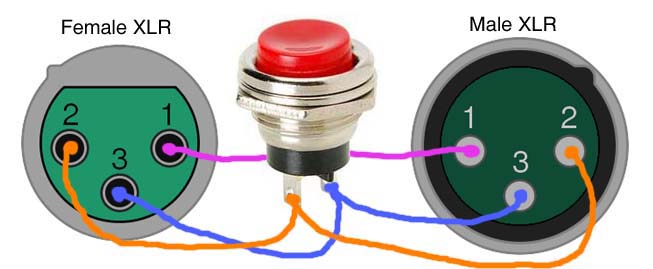
A cheap microphone
My suggestion for this particular talkback box would be a dynamic mic, and not a condensor or any kind mic that requires phantom power, since powered mics can induce an audible "pop" when they are muted/unmuted. The cool thing is that the cheapest, crappiest-sounding mics often make the best talkback mics because they give your talkback system that classic, hollow "intercom" sound. You can purchase a bottom-of-the-line vocal mic new for under $20.

Two XLR mic cables
You'll need one cable to connect your microphone to the talkback box, and a second cable to connect the talkback box to your mixer. I puchased two 3' Hosa mic cables (shown at left) from Amazon.com.

A project box
You can find these at your local Radio Shack or buy them online. The one I used was Radio Shack's 5" x 2.5" x 2" box.
The push-button switch will mount into the top of the box, and the two XLR panel jacks into one of the sides. I used a Dremel to make the holes.

A female panel-mount XLR jack
These are easy to find. You can get them at your local Radio Shack or buy them online.

A male panel-mount XLR jack
You probably won't find these at your local Radio Shack, since they are not as common as the female jacks. You can easily find them online though. I bought mine on Amazon.com.

Getting the right kind of switch is important. The switch you want is both momentary and normally closed (also referred to as "normally on"). You can find momentary, normally-closed switches at Radio Shack, but they are very tiny. A regular-sized switch is relatively rare and hard to find, but you can find them online. I bought this one on Amazon.com.
Amazon link: Momentary N. C. Panel Mount Push Button Switch

